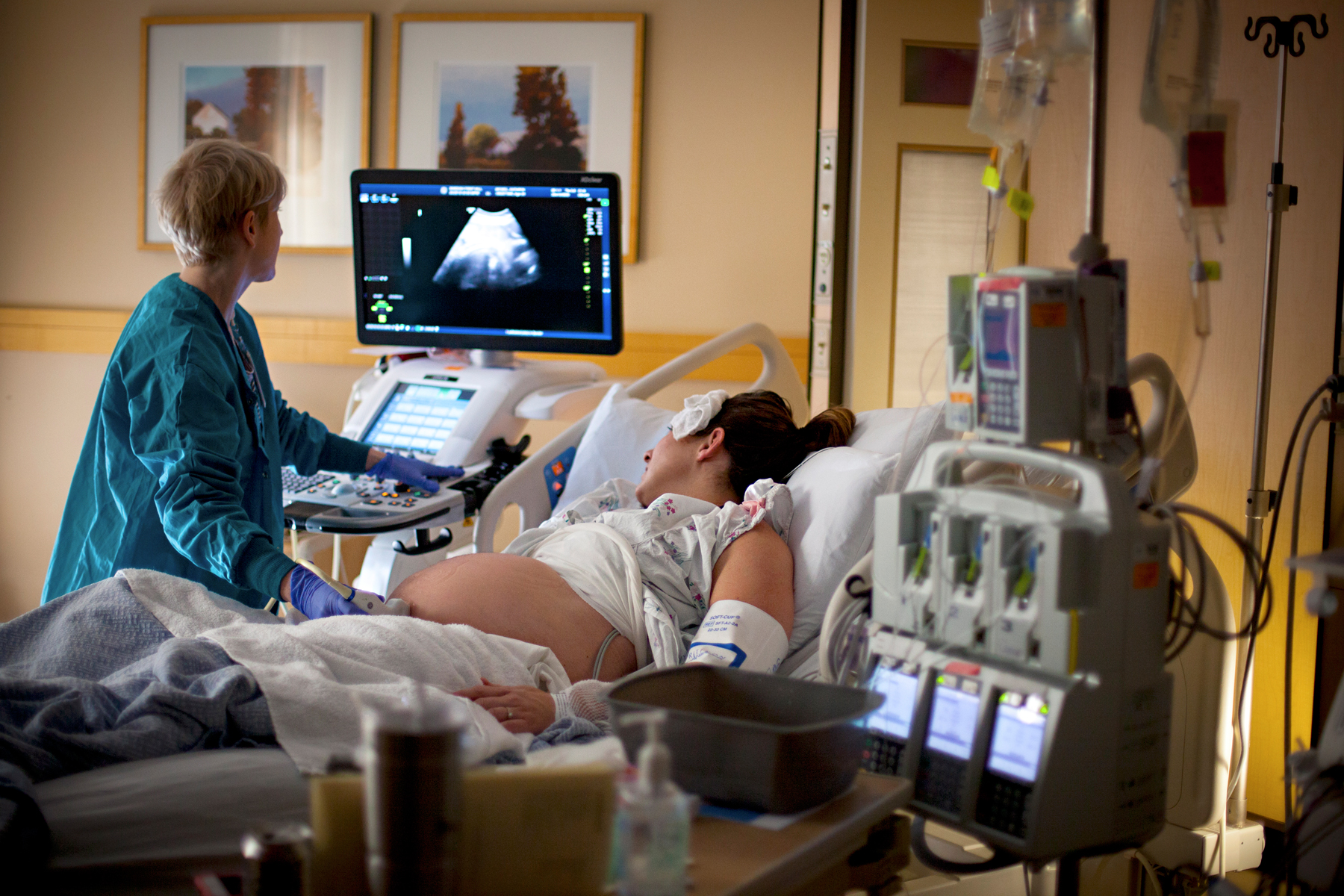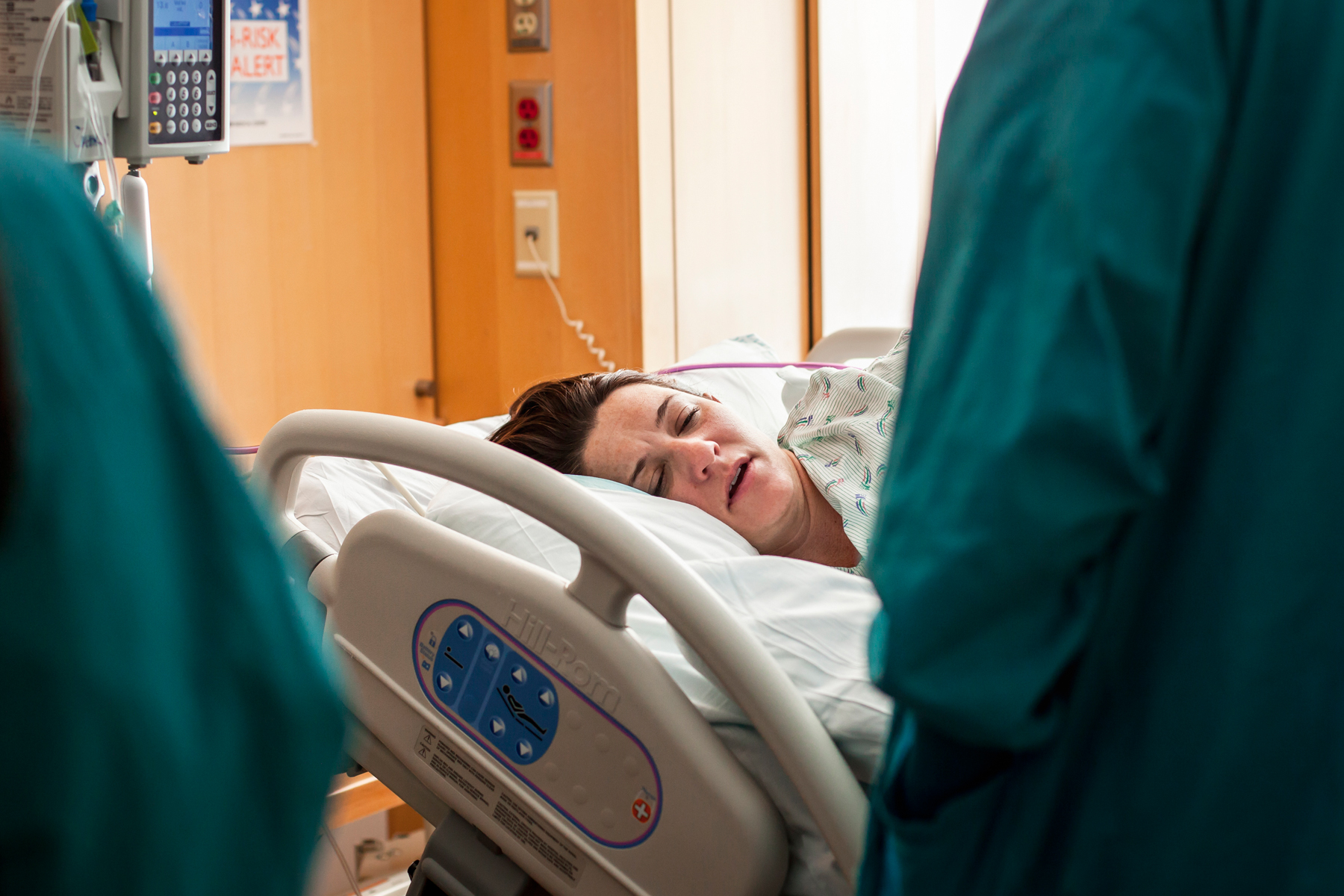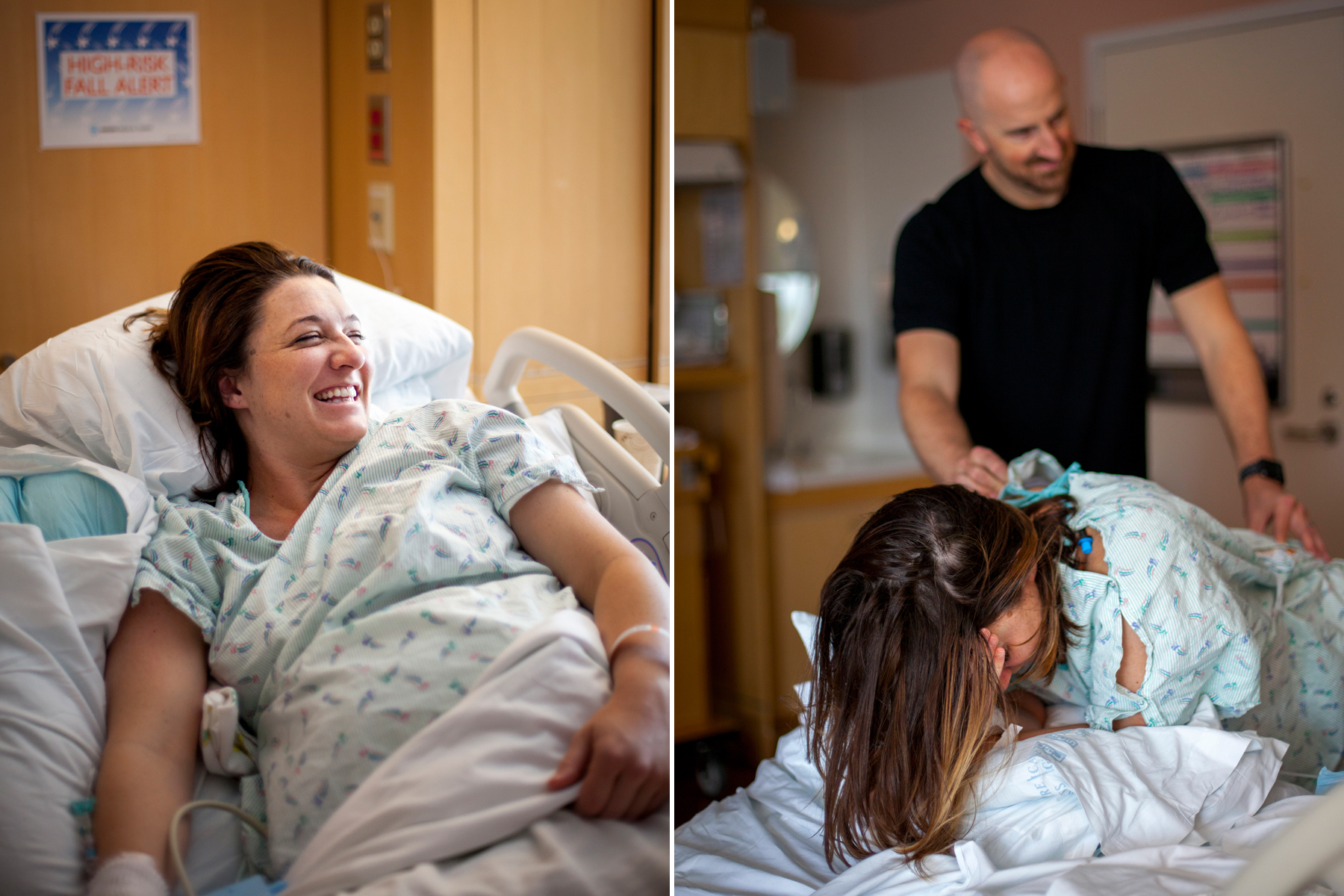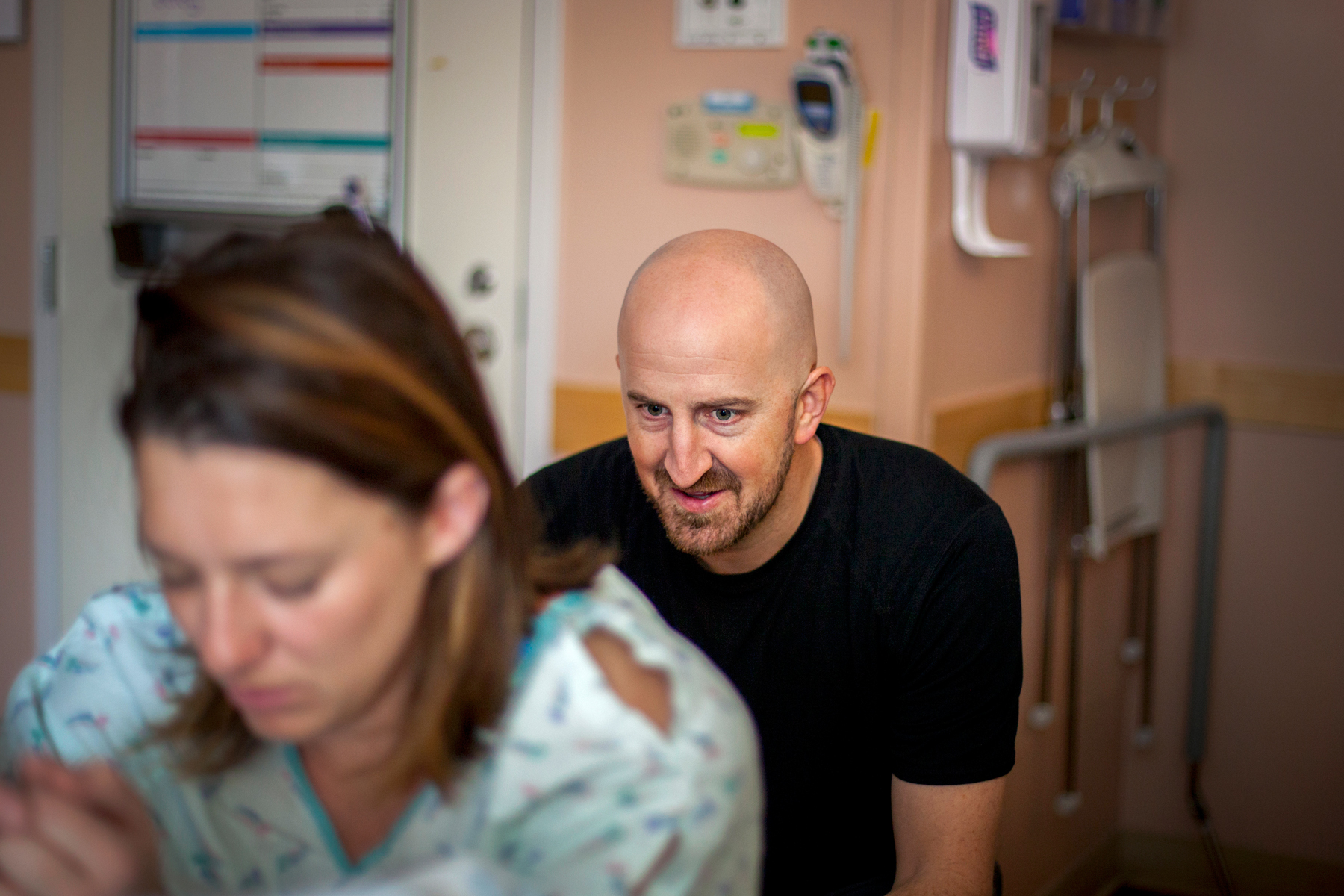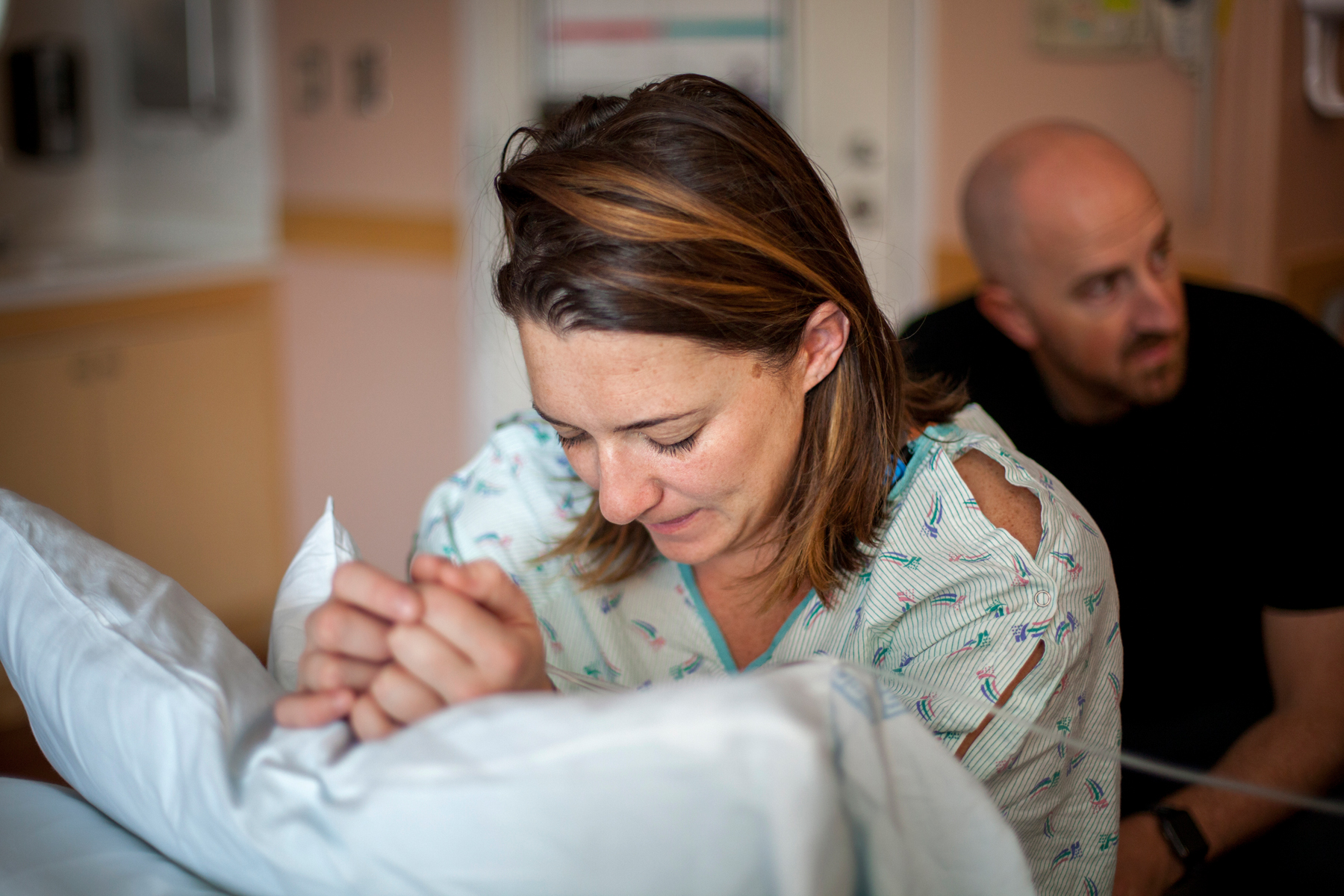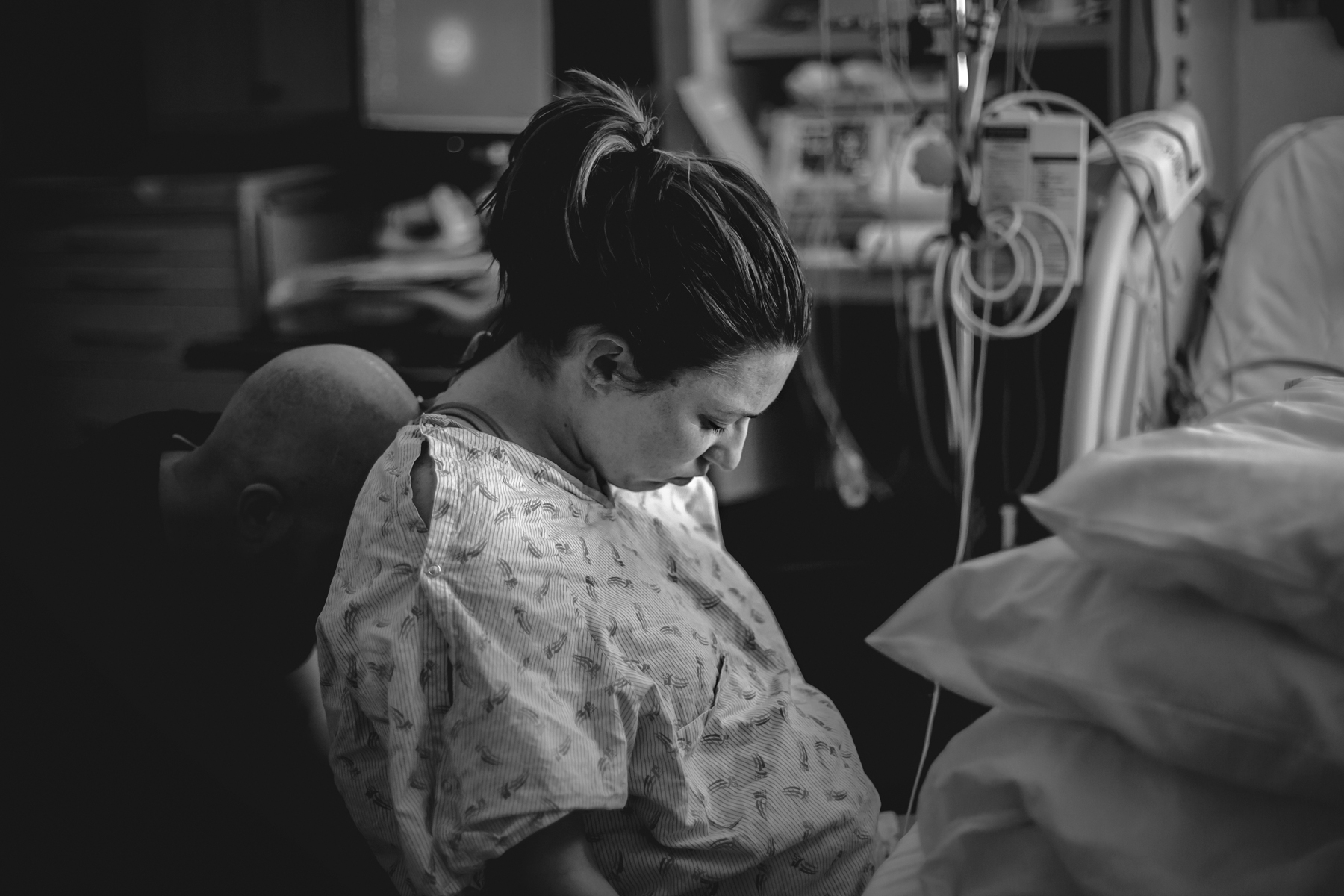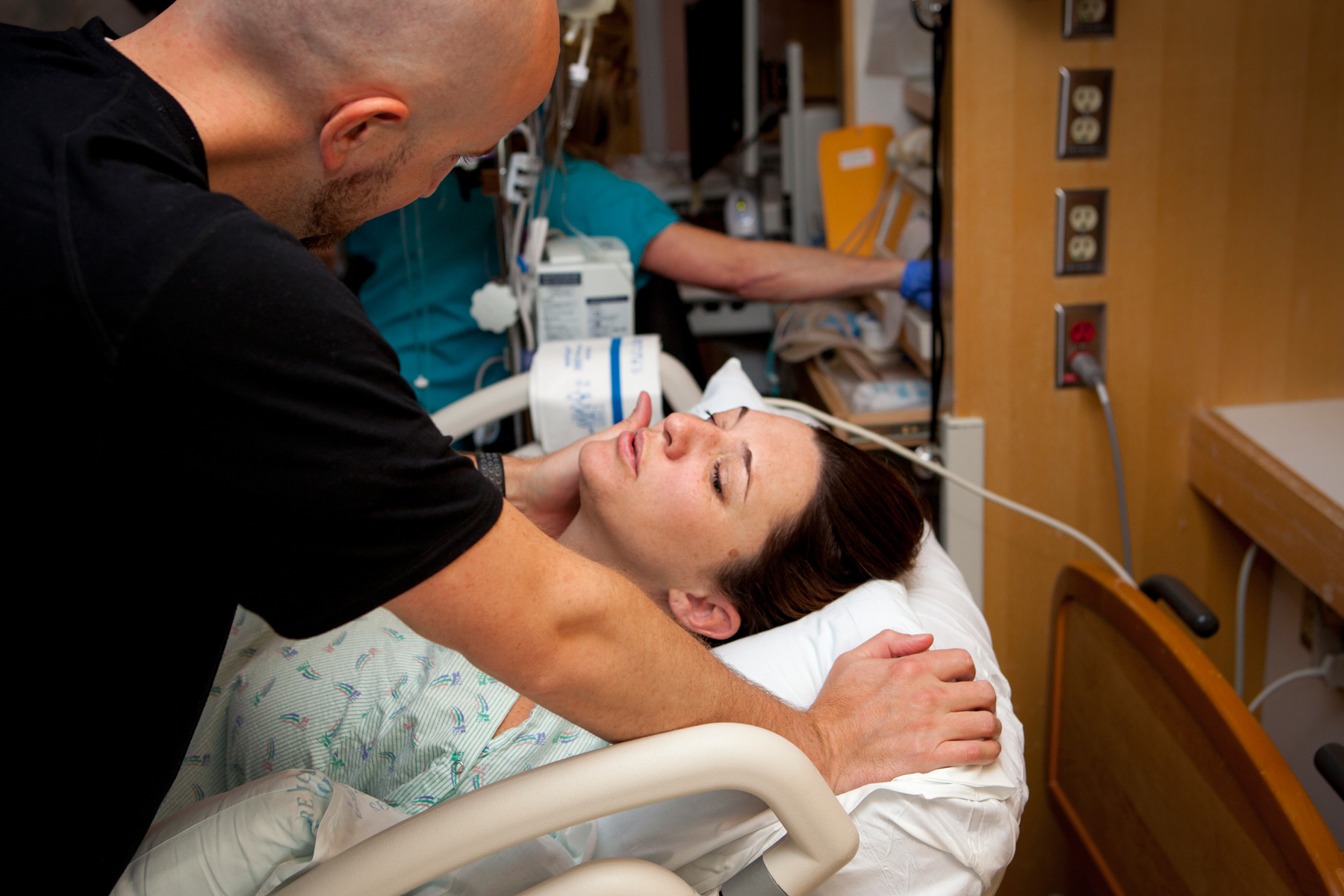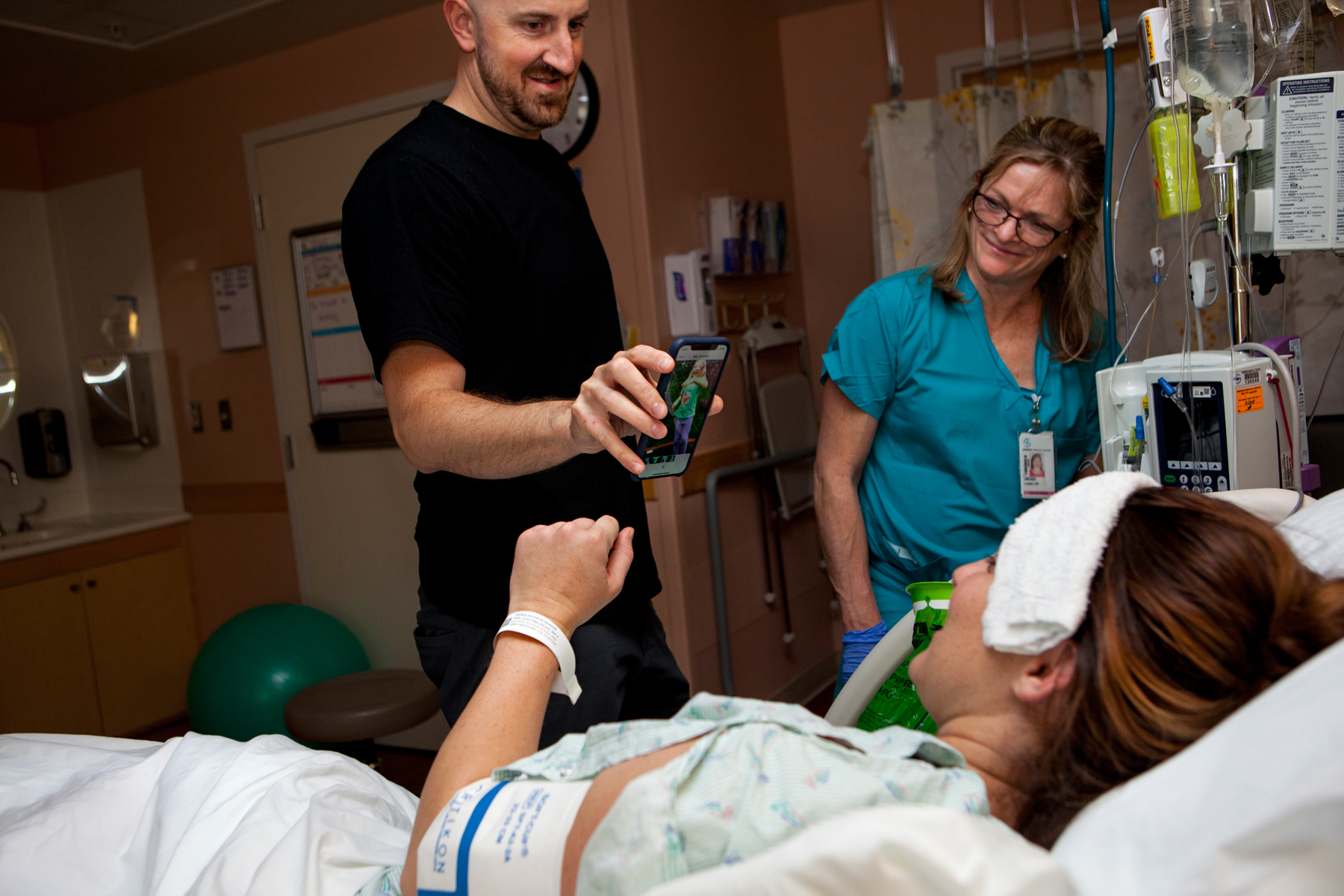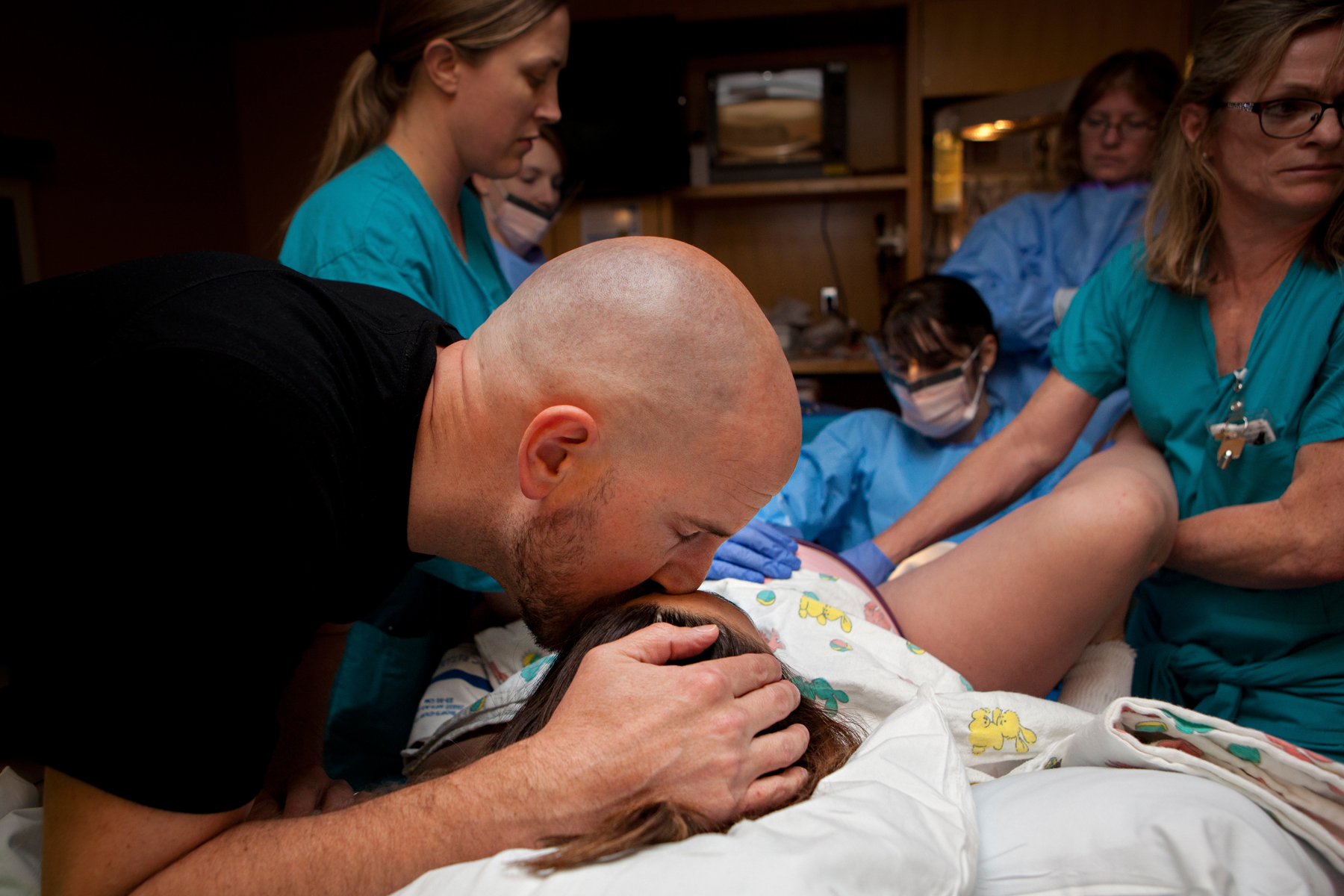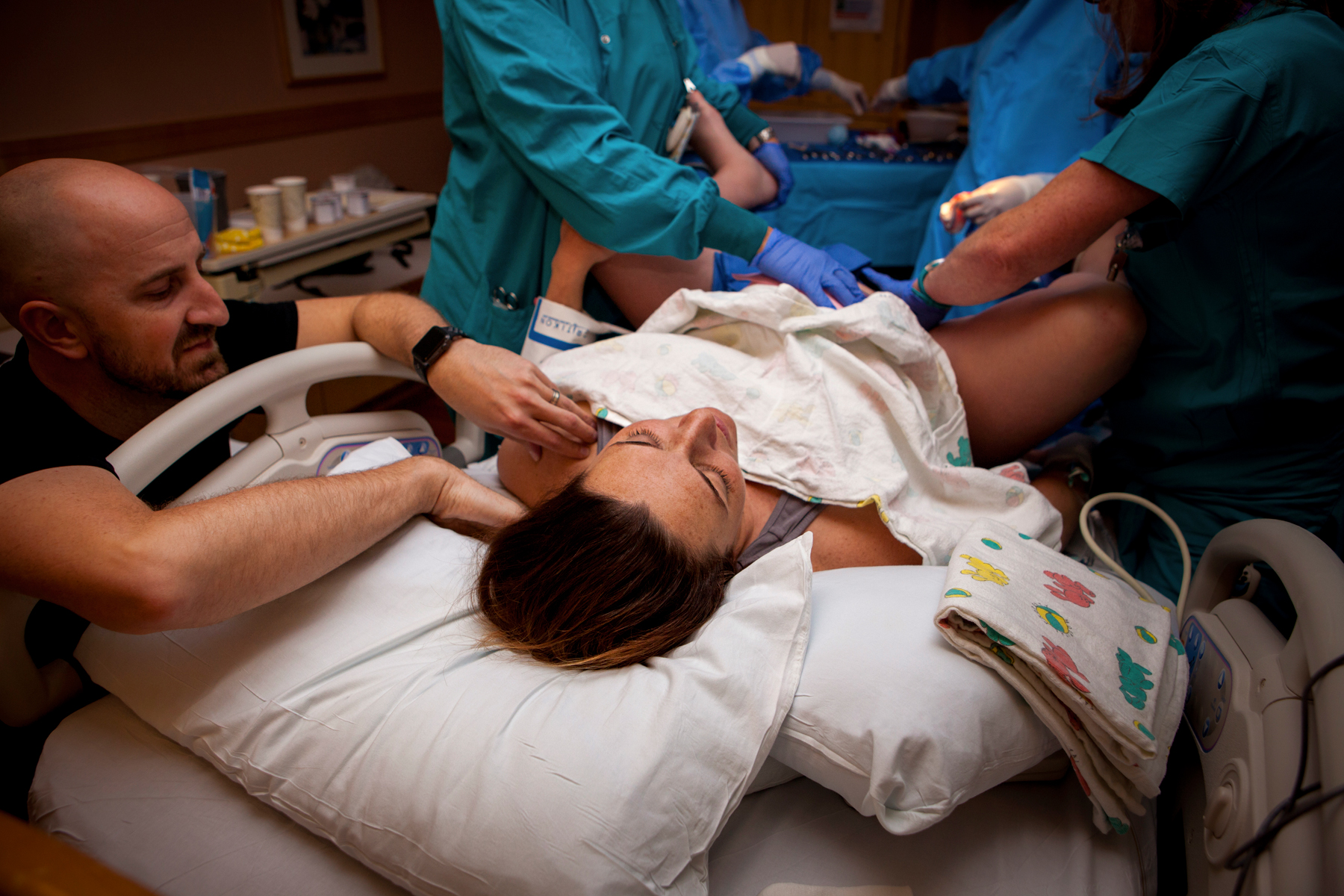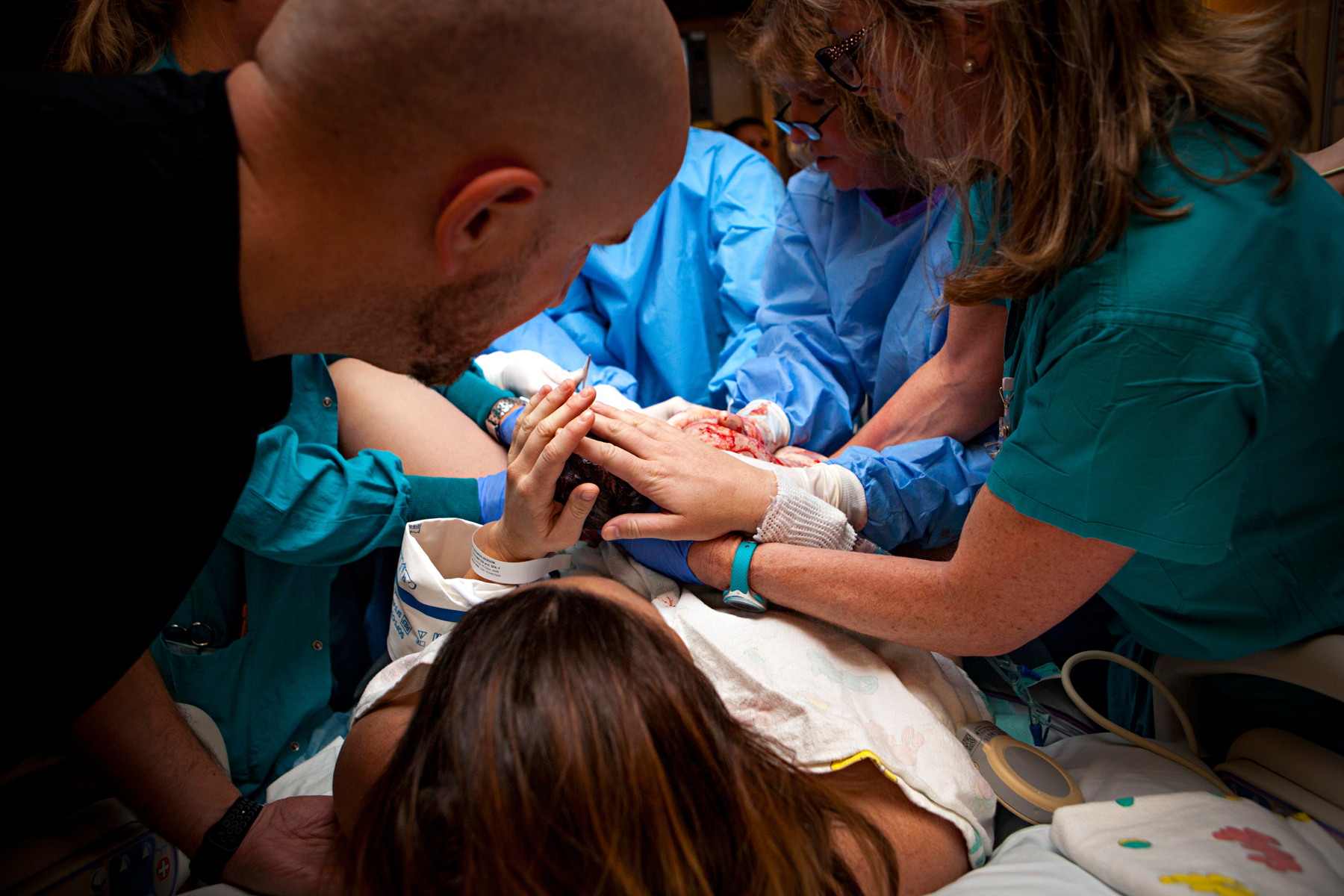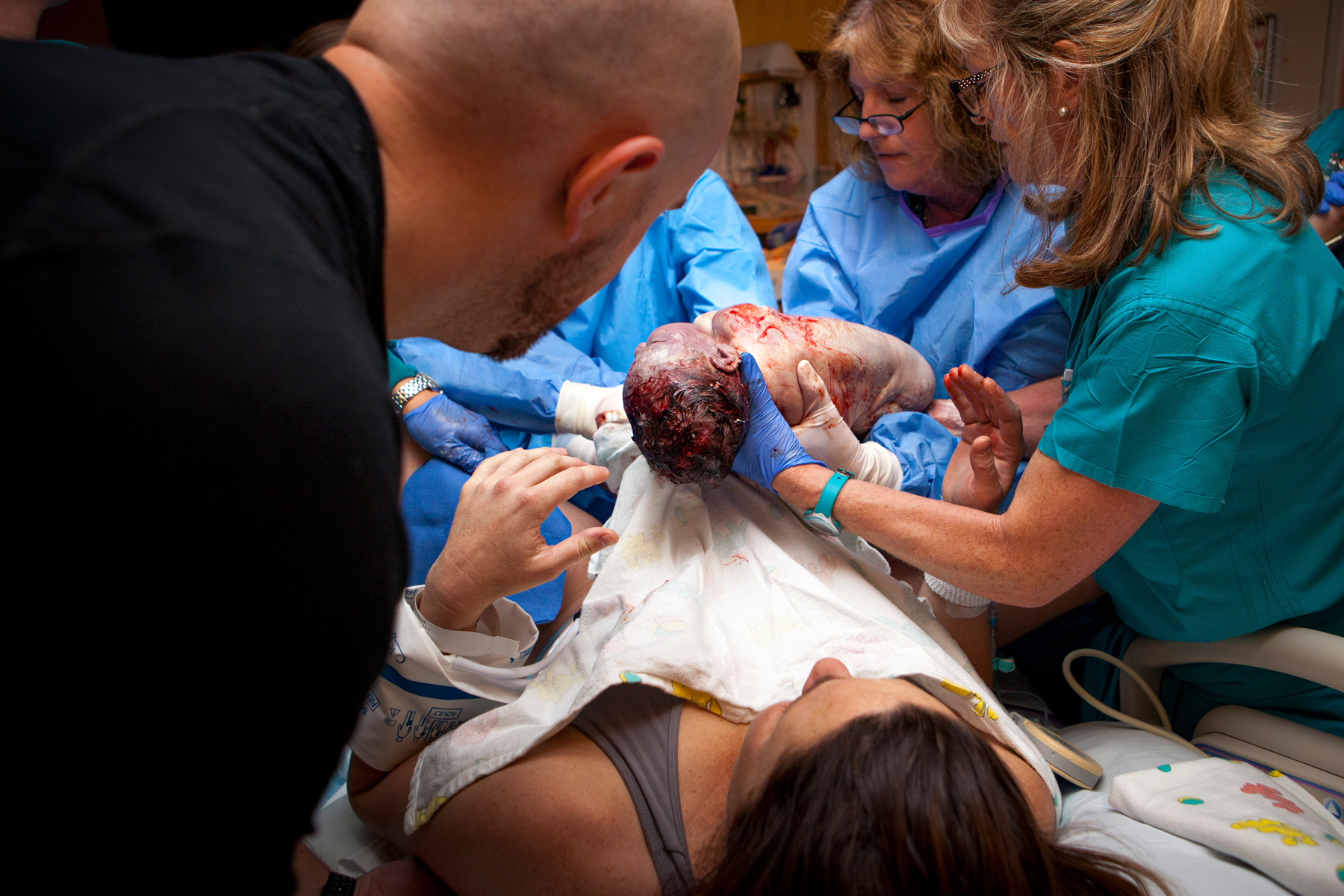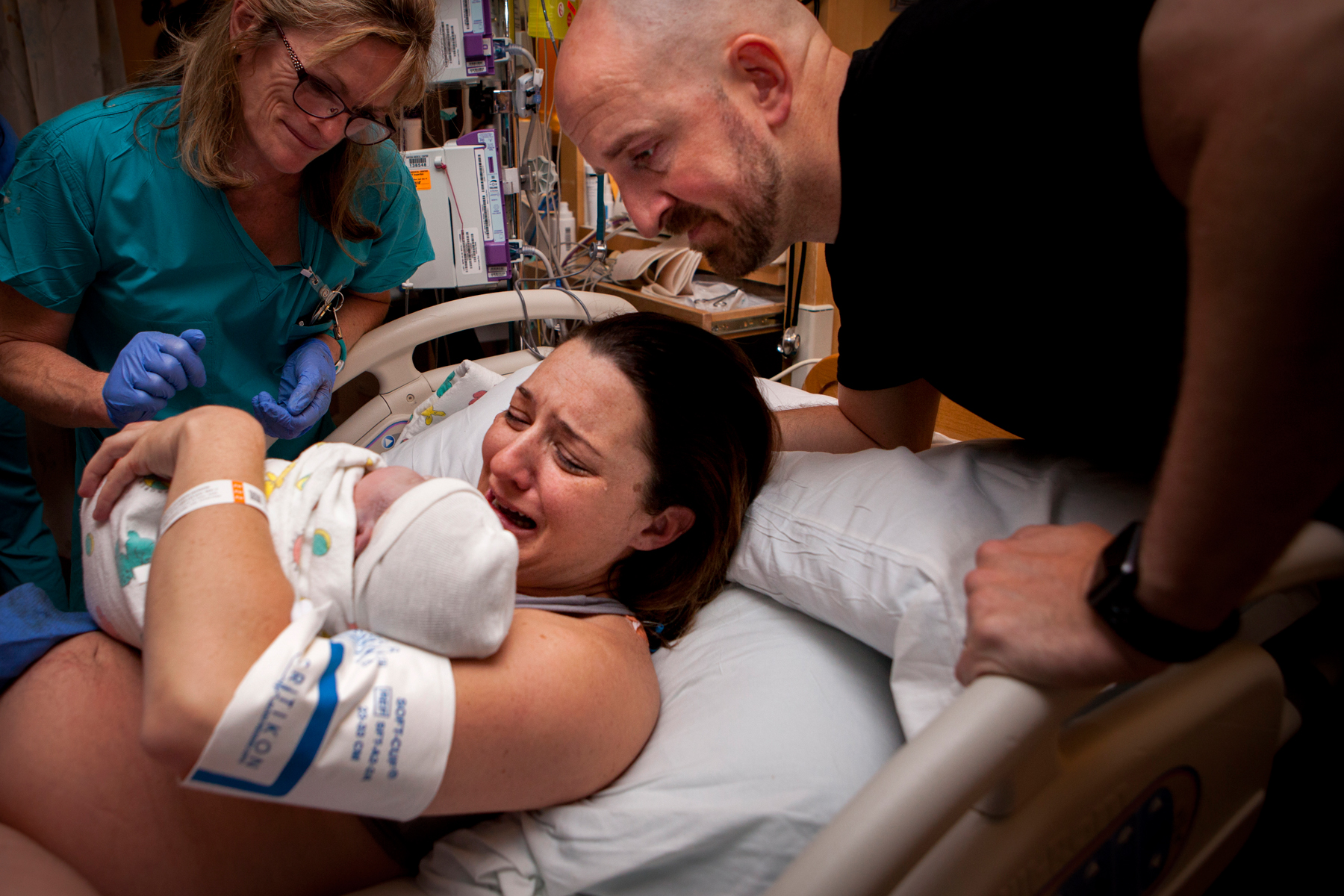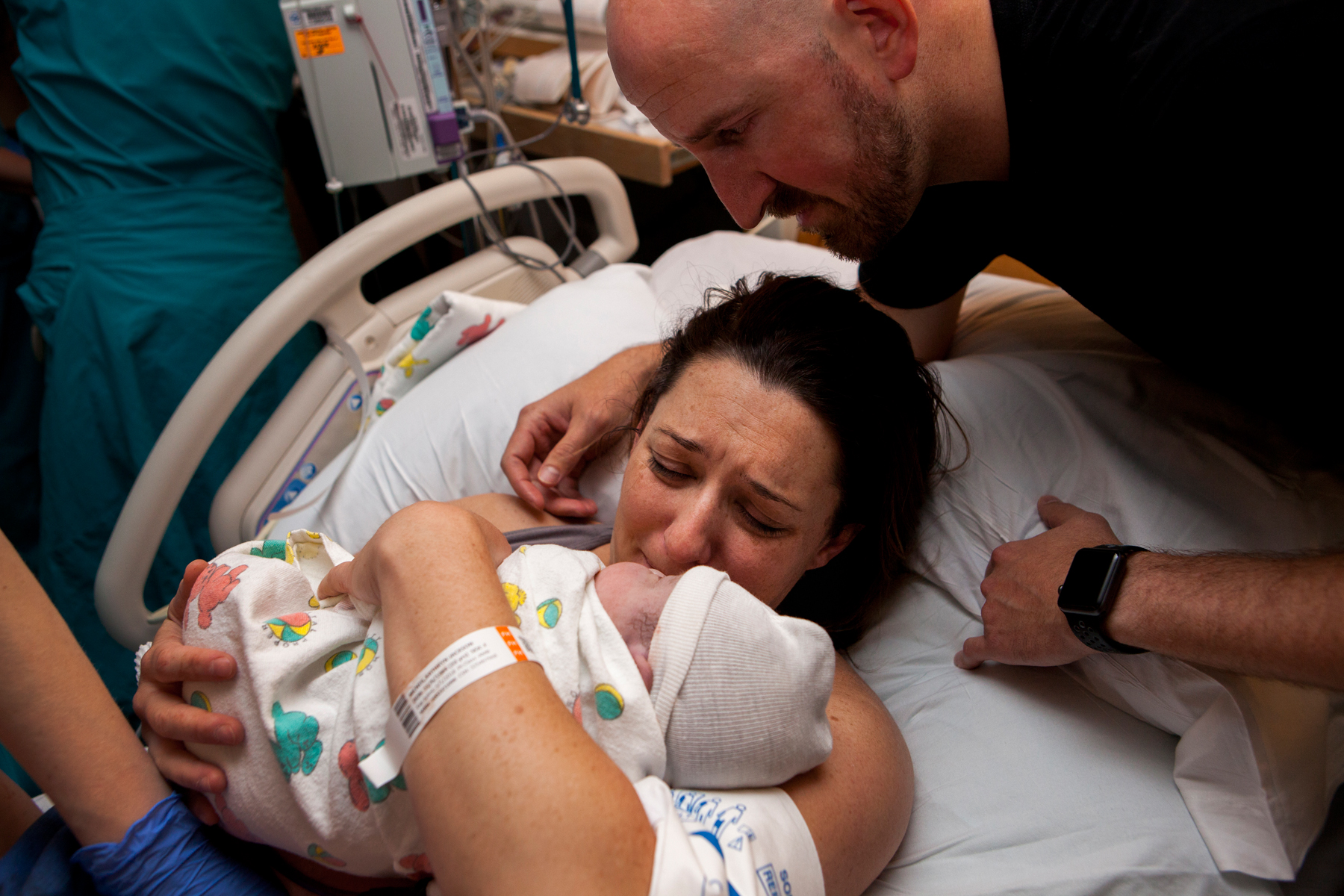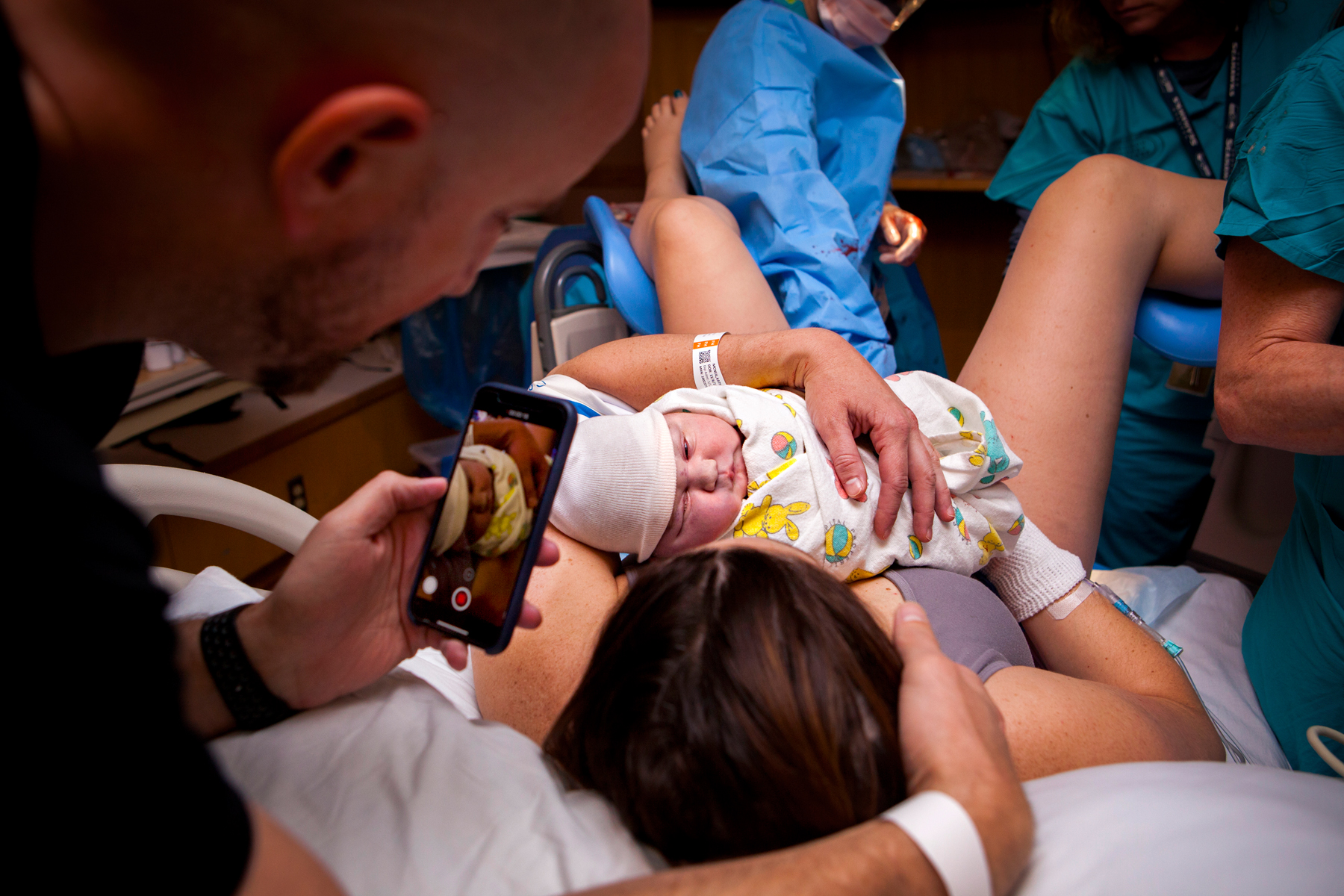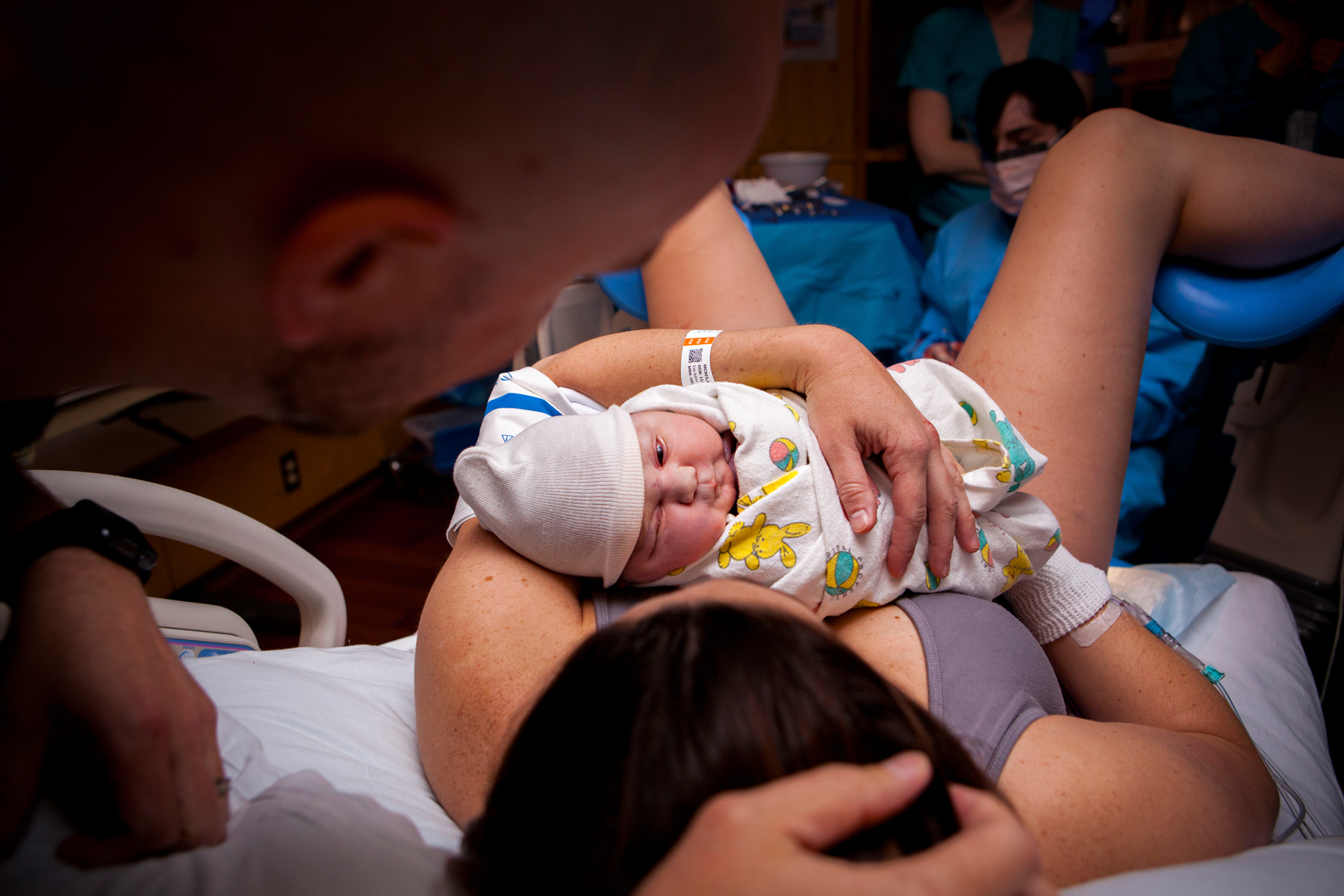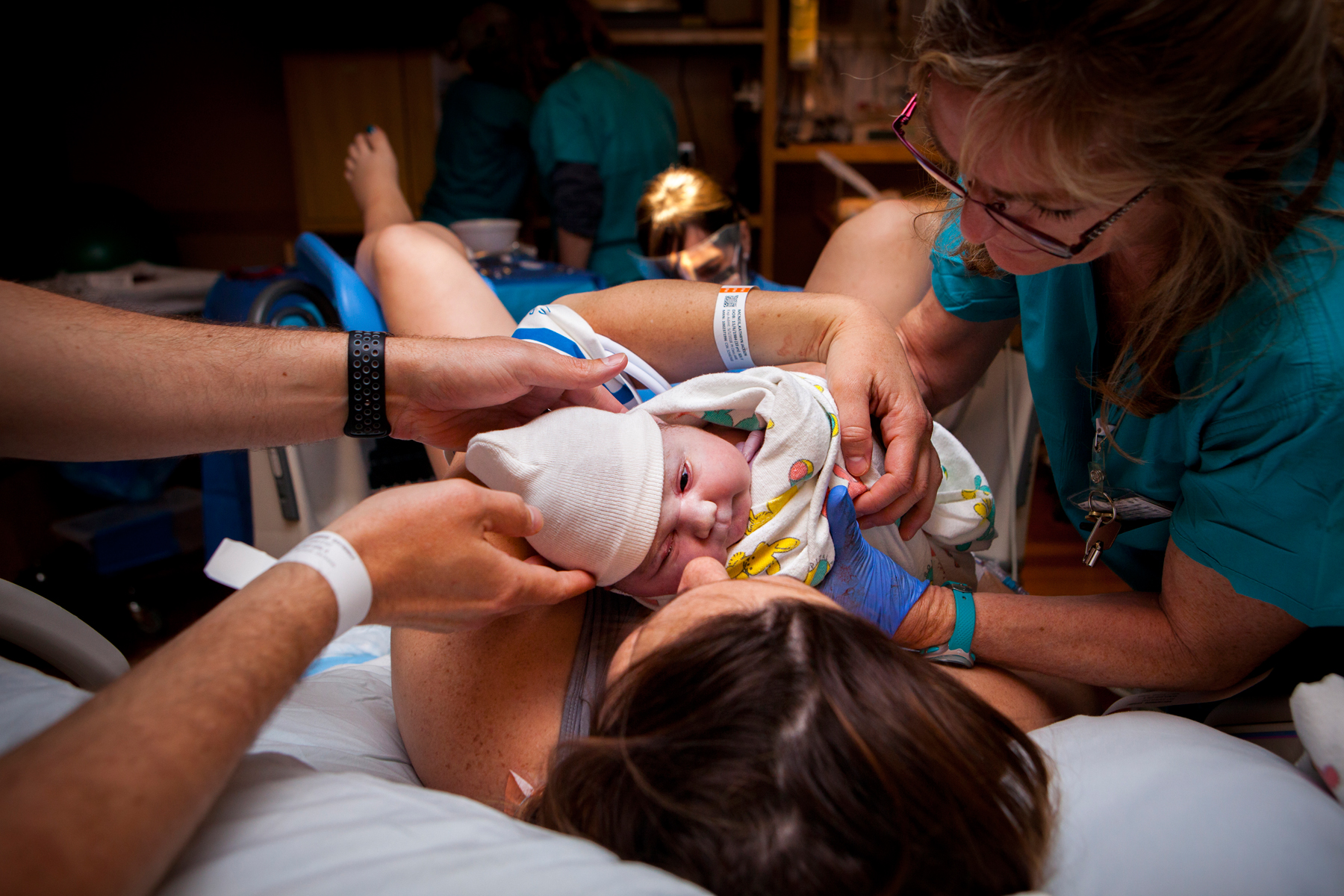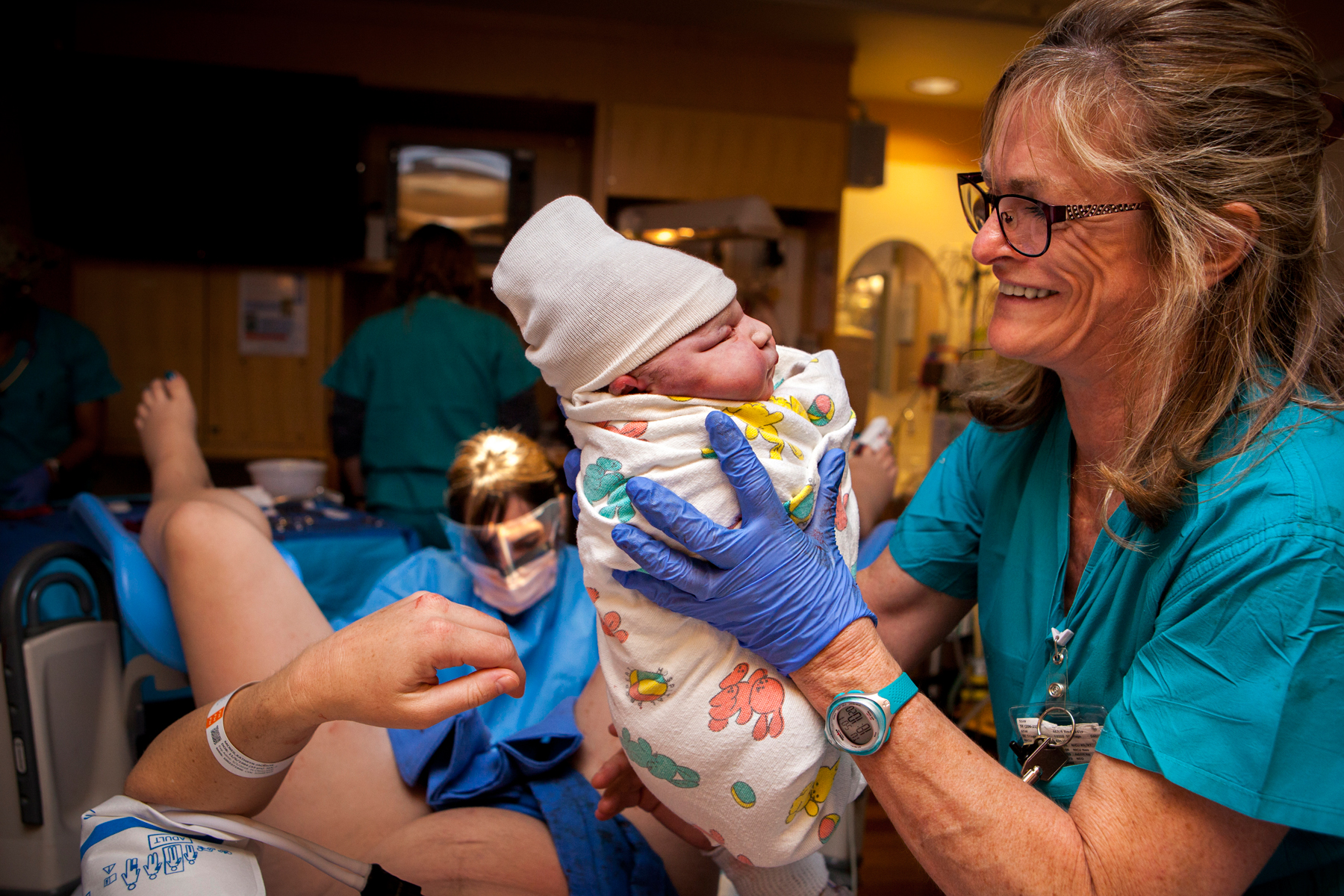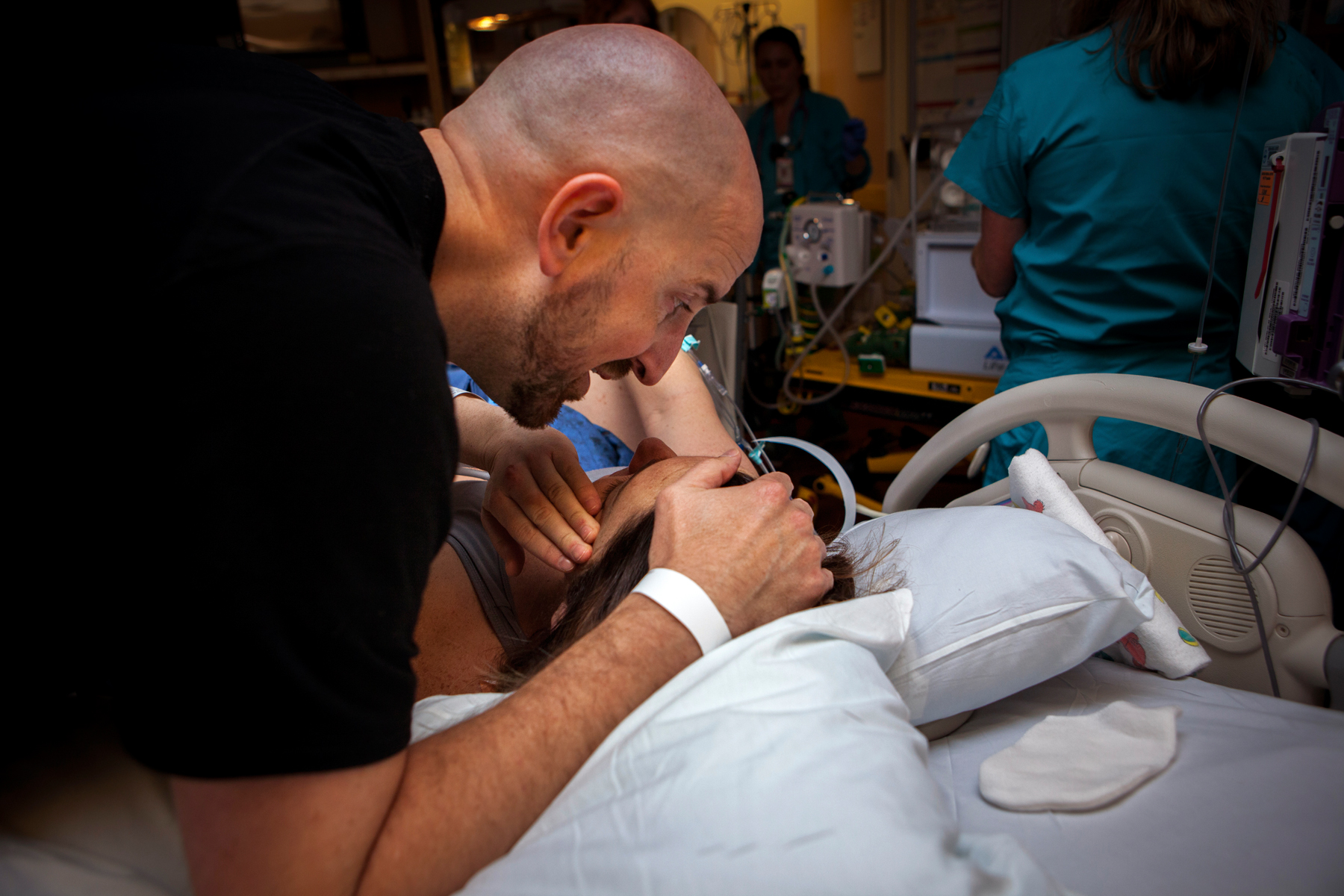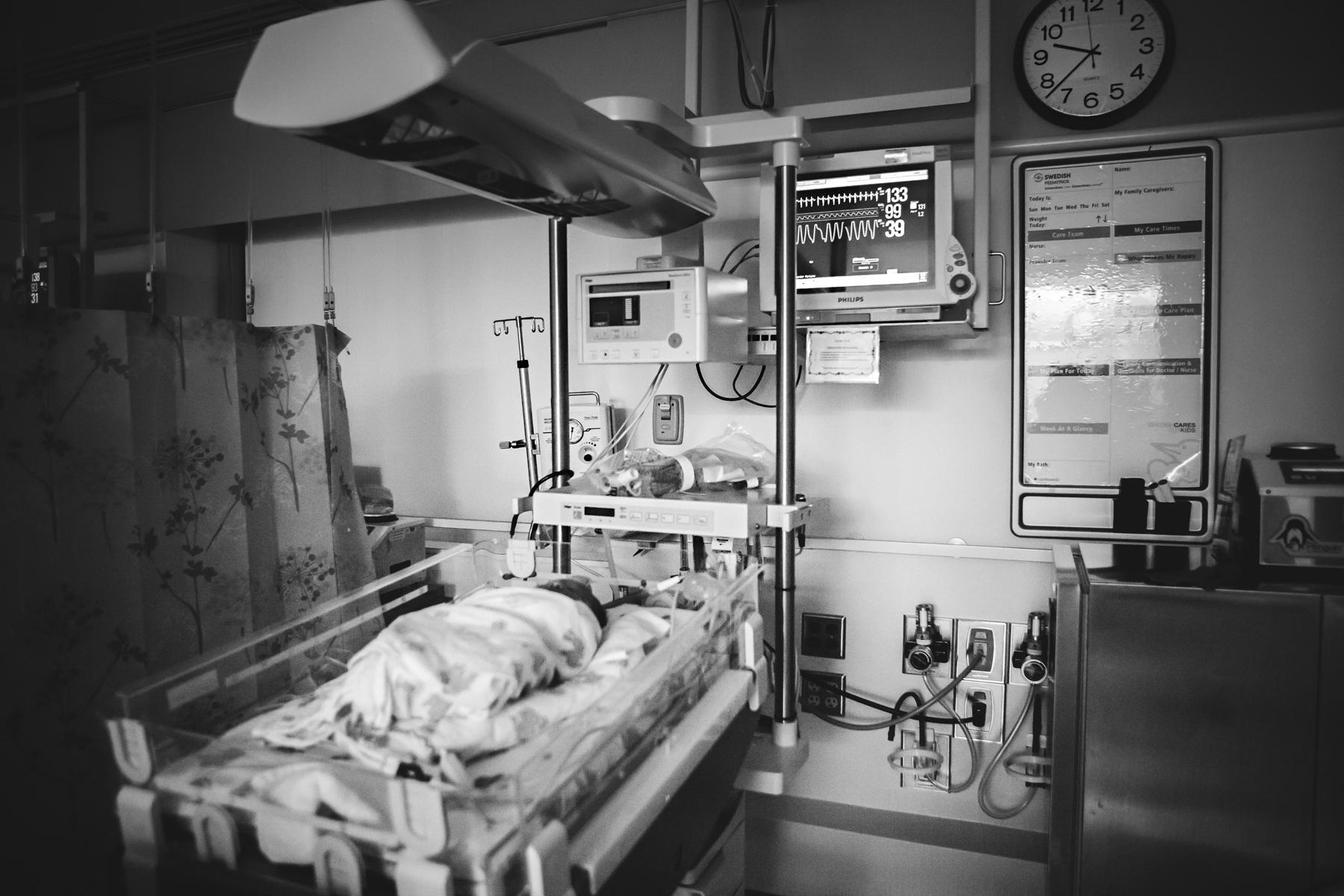Baby Tessa kept everyone on their toes. Contractions started at 32 weeks gestation — the same time her older sister was born. So into the hospital went Katie for steroid shots, magnesium and a few days of monitoring. No one thought she’d stay in until her induction date. But she did! And the surprises did not end there.
Katie labored like an absolute champ. Contractions aren’t known for being pleasant, and pitocin contractions even less so. The sensations of labor are very intense, and every woman needs a solid birth partner. Someone to squeeze your hips, remind you to center your breath, and whisper words of encouragement. Katie worked hard and knew it was time to get an epidural going to help with pain management. A couple hours of rest (watching video messages from the kids back home) and then it was time to push.
After months of waiting, wondering what she will be like, the uncertainty of pregnancy, this baby is only moments away. Katie pushed their baby closer and closer to this world. A couple contractions after crowning it became apparent that Tessa was not moving any closer to delivery. The doctor called shoulder dystocia and an entire team flooded the room, prepped to help a baby in distress.
Katie cried out in fear. “No!” We all had so many fears and questions racing through our minds. How long will she be stuck? Will she be OK? The medical team was calm, professional, and knowledgeable — everything you need in a moment of crisis. The doctor attempted multiple maneuvers and Cam and I coached Katie to push with everything she had in her. She was so brave and strong and 90 seconds later, their baby was born.
Tessa. 10 lb 7.5 oz.
There was only time for a moment’s connection. Mama’s hands on that warm, damp head. She was whisked away to the warmer for the NICU team to assess. After this intense delivery, Tessa was a bit limp and there was palpable tension in the room as we waited to hear that reassuring cry.
The rate of shoulder dystocia is around 1 in every 100 births, but nearly 10% of all newborns require some form of neonatal resuscitation during that transition from womb to world. It is not terribly uncommon for a new baby to be administered positive pressure ventilation. Warming beds, drying and stimulating the infant, clearing the airway — these are all steps care providers take to ensure a baby begins to use those lungs to breathe outside of their once watery home.
“Good, strong heart rate,” they noted. “This is good news,” I told Katie. She replied, “I heard a pop. I heard a pop when she was born!” Her nurse and OB calmly reassured Katie that everyone was doing what they could, but for a few agonizing moments, there were no answers.
Finally, a cry from across the room.
The best sound in the entire world.
Our collective relief. But none so relieved as the mother who heard her baby’s first wail — a signal that she was here to stay.
When they finally brought that smushy babe over, Katie’s worries melted into tears of relieved joy. Anyone who has birthed a baby knows that nothing compares to the reassuring weight of your child against your chest. They had their first hellos, minutes of snuggling and whispering and admiring this newest miracle. Then it was off to the NICU for Tessa for some X rays and observation.
As a side note, did you see the size of that placenta?! One of the most impressive I’ve laid eyes on. Baby Tessa fractured her humerus at birth, but she has recovered splendidly with just a little splinting. Our bodies are so incredible, and Tessa’s birth reminded me once again why I count myself lucky to be invited to document the birth stories of Seattle families. Birth is sometimes peaceful, sometimes dramatic. But always miraculous.
